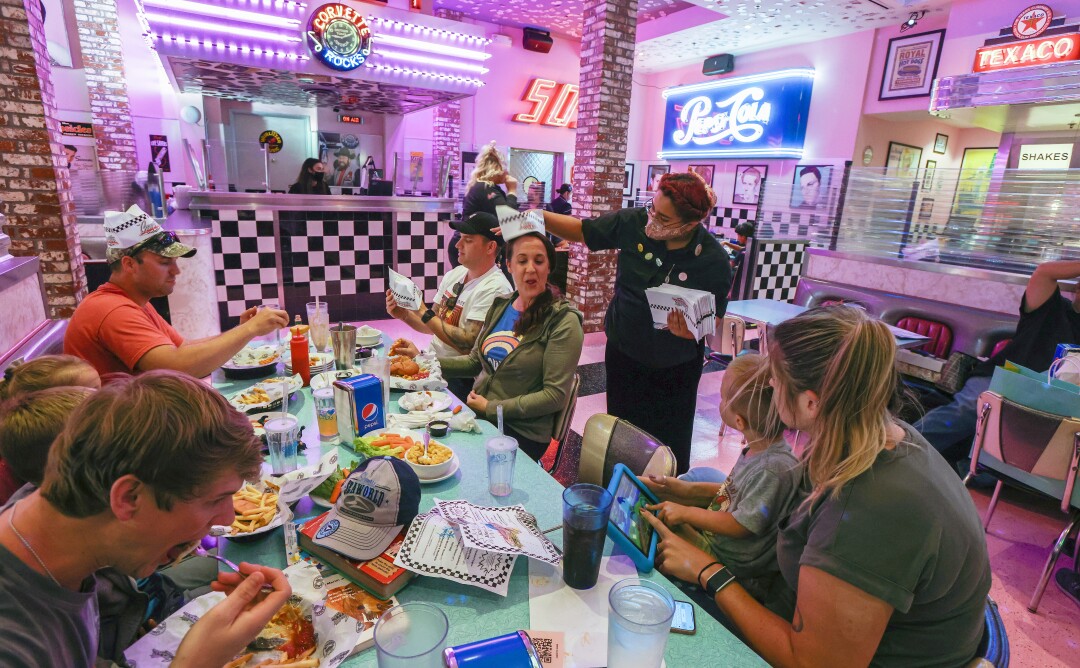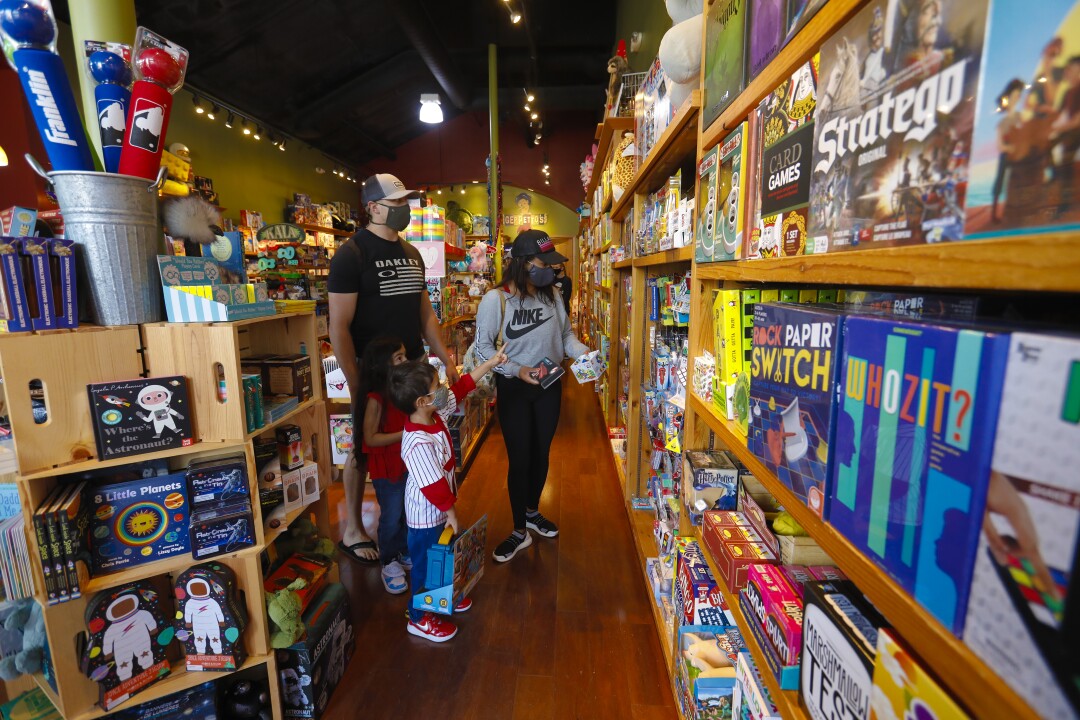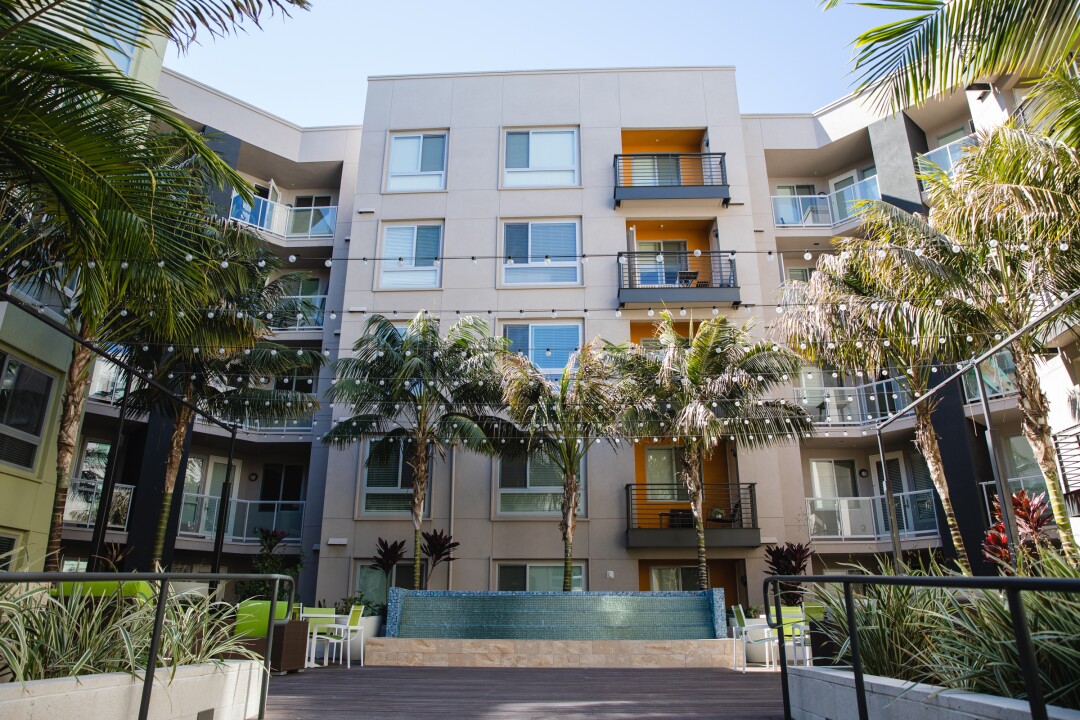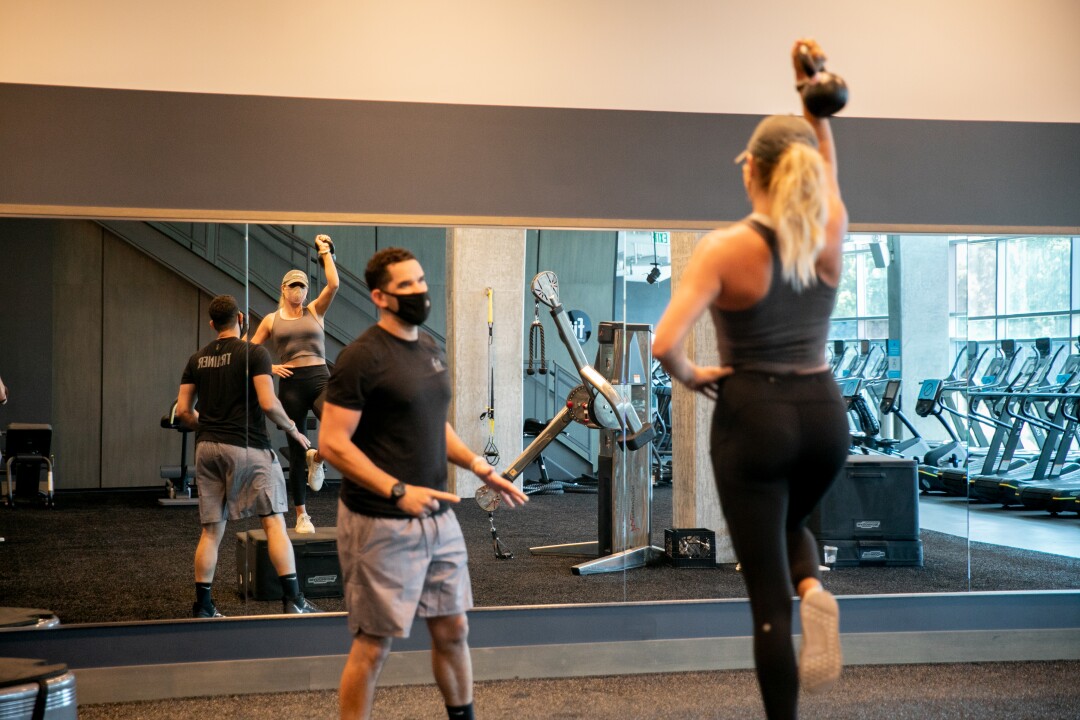For the past couple of months, San Diego County residents have grown accustomed to more relaxed COVID-19 regulations as they increasingly dine out indoors, catch the latest flick at the movie theater, ride a roller coaster or cheer on the Padres at Petco Park.
So when California fully reopens Tuesday, June 15 — minus the state’s color-coded blueprint for daily life — the long-awaited moment is going to feel a bit anticlimactic.
To be sure, government-imposed rules aren’t disappearing entirely amid a pandemic that is not yet vanquished. Social distancing, capacity limits and broad facial covering mandates are going away, but in their place are more nuanced rules for masking in certain situations, along with a separate set of guidelines governing “mega events” that draw thousands of people.
Even as state officials last week sought to further clarify the new rules of what will soon feel like a largely pre-pandemic economy, there is bound to be confusion, especially as it relates to changes governing mask wearing, acknowledged Dr. Wilma Wooten, San Diego County’s public health officer.
“There’s confusion already out there, particularly with the CDC (Centers for Disease Control and Prevention) recommendations that everyone who is vaccinated doesn’t need to wear a mask,” Wooten said. “That means people who are unvaccinated should wear a mask, and that stigmatizes people, so people may choose not to wear a mask because they don’t want to be singled out as not being vaccinated.
“So I don’t have any magic answers here.”
She also cautioned that the pandemic is not over yet, though the incidence of coronavirus cases has slowed dramatically.
In the interest of clearing up any lingering confusion about how to navigate a world free of purple, red, orange and yellow tiers, here’s a guide.
What about masks?
A mix of masked and unmasked people walk in Pacific Beach last month.
(Sandy Huffaker)
Following the lead of the CDC’s guidelines for facial coverings, the California Department of Public Health clarified last week that those who are fully vaccinated can shed their masks under most circumstances. There are settings, though, where masks will still be required, including on public transit (airplanes, trains, subways, taxis), at transportation hubs such as airports and train stations, indoors in K-12 schools, health care settings, correctional facilities and homeless shelters.
Unvaccinated people, however, will still be required to wear facial coverings in indoor settings such as stores, restaurants, theaters and family entertainment centers, although it will be left to businesses to police mask wearing. They will have the choice of allowing people to self-attest that they’re vaccinated, implementing a system for verifying vaccination status or requiring all patrons to wear masks.
Much less clear is the increasingly hot-button issue of masking rules for workers. In an about-face June 9, members of the state’s Occupational Safety and Health Standards Board suggested they will move to no longer require fully vaccinated employees to wear masks while on the job, consistent with recommendations issued by federal and state health officials.
The proposal will be presented at a meeting of the board Thursday, June 17, and if approved, could go into effect by Monday, June 28, once it’s reviewed by the state Office of Administrative Law.
Just a week earlier, the workplace safety panel had recommended a stricter rule that would have allowed workers to take off their masks only if every person in the room was fully vaccinated and did not have COVID-19 symptoms.
The board’s changed stance followed a backlash from business representatives who argued that the more restrictive policy would be a burden and go against progress against the virus.
The safety panel’s actions effectively mean that vaccinated employees will still need to mask up at workplaces until June 28, when the new proposal is expected to go into effect.
As Californians enter a largely mask-free era, the vaccinated should feel more comfortable about being protected against the coronavirus, but there are still likely to be clashes over the wearing of facial coverings, said Dr. Davey Smith, UC San Diego’s chief of infectious-disease research.
“If you’re vaccinated, an unvaccinated person doesn’t present a big threat to you, and it’s always been that way,” Smith said. “I only worry about people getting into arguments at Starbucks about someone not wearing a mask.
“We’re coming to a time where we need to have self-policing as opposed to others policing. I’ll take care of myself and not worry about others out there.”
Dining out

A server passes out hats last month at Corvette Diner in Liberty Station.
(Eduardo Contreras / The San Diego Union-Tribune)
When San Diego County entered the most relaxed of the four color-coded tiers on June 9, restaurants were able to be open at 50 percent indoor capacity. But starting June 15, there will be no limits on occupancy, nor will masks be required, and tables will not have to be placed six feet apart. Restaurants and bars can adopt stiffer rules.
“We’re excited we’re heading back to normal and looking forward to serving more and more of our guests,” said David Cohn, co-founder of the Cohn Restaurant Group. “We’ll continue to have masks available for those who want them, as well as hand sanitizer, and we’ll continue the disinfection we’ve always done. We did put plexiglass in and we will be taking out all those dividers.”
Newsletter
Get the La Jolla Light weekly in your inbox
News, features and sports about La Jolla, every Thursday for free
Enter email address
Sign Me Up
You may occasionally receive promotional content from the La Jolla Light.
David Spatafore, whose portfolio includes Liberty Public Market at
Point Loma’s Liberty Station, said he will continue with upgraded sanitation and will retain the eight hand sinks strategically placed throughout the food hall. But signs saying “Keep the rona away, wash your hands” will be removed as San Diego moves into a new era, he said.
“Our plan is to follow what’s being said by opening things back up and going back to normal and trust that people will wear masks if they’re not vaccinated,” said Spatafore, who acknowledged that he has a few employees who don’t want to get a vaccine.
Like Cohn, Spatafore plans to remove the barriers between tables at his restaurants but will keep them in storage because “God knows” if there could be a return to virus-fueled restrictions.
Gyms
Personal trainer Kyle Farley works with client Torey Shanklin in August at Fit Athletic Club & Gym in downtown San Diego.
(Sam Hodgson / The San Diego Union-Tribune)
Like gyms across the county, Fit Athletic’s five locations will go from 50 percent capacity to 100 percent June 15. All equipment will be open, instead of every other machine being closed to encourage social distancing. Saunas will reopen.
Owner Scott Lutwak said Fit Athletic will require employees to wear masks, but not customers. He said he has followed laws strictly throughout the pandemic and doesn’t want to do anything wrong.
EōS Fitness, a gym chain with three locations in San Diego County, said it is too soon to say what it will do.
“At this time, we don’t have a clear picture of what will be expected of businesses with regard to mask requirements,” the company said in a statement. “But we hope to receive clear guidance from the state soon to help guide our decision process. What we can tell you is, we plan to adhere to all state and local guidelines as we have throughout the pandemic, prioritizing the health and safety of our members and team members.”

Customers browse Geppetto’s Toys at Westfield UTC mall in May 2020.
(Nelvin C. Cepeda / The San Diego Union-Tribune)
As is the case with most businesses, mask wearing will no longer be required, except for the unvaccinated, whether at a grocery store, boutique or big-box retailer, per state and local guidelines. Individual retailers, including those in malls, will have the option of imposing their own restrictions.
Customers at Ralphs supermarkets “will no longer be required to wear a mask per Gov. [Gavin] Newsom’s June 15 reopening plan,” spokesman John Votava said in a statement.
Given the still-evolving guidance on facial coverings for employers, retailers like Ralphs say they will follow the California rules as of November that mandate masks for all workers.
Target said it no longer requires fully vaccinated guests and team members to wear face coverings at its stores, “except where it’s required by local ordinances.” This month it reopened fitting rooms in its San Diego County stores.
With the wider reopening, some malls are making changes in keeping with the relaxed standards. At Westfield UTC, for example, the children’s play area will reopen and some live events will return.
Brian Miller, owner of the Geppetto’s toy store chain, said he welcomes the lifting of the mask mandate given the sometimes difficult discussions his employees have had with customers unwilling to don face coverings.
“I’ve surveyed my employees and I think most of them want to continue wearing masks because they’re working with consumers they don’t know,” Miller said. “I would not require it, but if they’re more comfortable doing that, I’m fine with that.”
Movie theaters
Cinemas, now open at 50 percent capacity, will no longer have mandated COVID-19 restrictions on the number of patrons. AMC Theatres’ website currently says masks are not required for fully vaccinated patrons but that it continues to follow applicable state and local mandates.
“If you are not fully vaccinated, we ask that you continue to wear a mask throughout the theater unless actively enjoying food or drinks,” the company says.
At The Lot cinemas in La Jolla and Liberty Station, Chief Executive Adolfo Fastlicht said he’s looking forward to expanding to 100 percent capacity, provided he can hire enough workers by June 15. Even at full capacity, Fastlicht said, seating in his luxury auditoriums is, by design, more spacious.
“You’re not going to be seated with hundreds of people, so our design already contemplates social distancing,” he said. “And our employees will still be wearing masks, as required. That’s also a way to tell our customers we are doing something to protect them and the employees.”
Sporting events, concerts and conventions
The San Diego Padres’ Wil Myers signals to fans as he takes the field to play the New York Mets at Petco Park on June 6.
(K.C. Alfred / The San Diego Union-Tribune)
Even as California transitions to its widest reopening since the pandemic-forced shutdown in March 2020, health officials are carving out special conditions for what they call “mega events,” defined as those drawing crowds of more than 5,000 indoors and 10,000 outdoors.
For indoor gatherings such as conventions, some sporting events and concerts, the rules are stiffest — required verification that guests have been fully vaccinated or have tested negative for COVID-19.
For outdoor events such as music festivals, parades and other sporting events, vaccinations and negative tests are “strongly recommended” and guests who do not verify vaccination status could be asked to wear face coverings.
The mega events guidelines are set to expire Oct. 1.
The Padres have been adhering to capacity limits at home games at Petco Park and have designated sections for fully vaccinated fans and those who have had a recent negative test. Other sections have been reserved for spectators who want to be socially distanced.
That will change, however, starting Thursday, June 17, when Petco Park returns to full capacity for the Padres’ next homestand. The games are considered mega events.
“While it is not feasible operationally for us to verify the vaccination status of 40,000-plus fans coming through our gates, we recommend that all fans get vaccinated,” the Padres said in a statement. “We are also partnering with MLB [Major League Baseball] and the county of San Diego to provide additional vaccination opportunities, both at Petco Park and other locations throughout the county, with access to tickets to future Padres games for those who participate.”
The U.S. Open golf tournament, which returns to Torrey Pines Golf Course’s South Course in La Jolla June 17-20 for the first time since 2008, will have limited capacity for spectators because at the time planning got under way months ago, the pandemic guidelines were much more stringent, said Jeff Altstadter, director of championship communications for the U.S. Golf Association.
Some of the rules in play for the golf tournament were updated last week to reflect the state’s changing guidelines for June 15 and beyond. For instance, masks will not be required for spectators, but unvaccinated people will have to wear face coverings indoors.
In addition, all guests must verbally attest that they were vaccinated against COVID-19 at least 14 days before their first day attending the tournament or that they had a negative test result. If they are unable to do so, they cannot attend, although actual proof is not required. The tournament is relying on an honor system, Altstadter said.
Estimated attendance for the tournament is 8,000 to 10,000 paid spectators.
For conventions and concerts, there will be a longer wait for a return to normalcy. Currently, none of San Diego’s biggest outdoor and indoor concert venues — including the Cal Coast Credit Union Amphitheatre at San Diego State University, the Civic Theatre and The Rady Shell at Jacobs Park, the new summer home of the San Diego Symphony — are scheduled to reopen until August or September.
San Diego’s bayfront convention center, currently a federal intake center for unaccompanied migrant children, will welcome its first convention Aug. 1-5 after nearly 1½ years of no conferences and trade shows.
Theme parks

Unikitty’s Disco Drop ride at the new Lego Movie World attraction at Legoland California in Carlsbad.
(Eduardo Contreras / The San Diego Union-Tribune)
While SeaWorld, Legoland and the San Diego Zoo can return to full capacity, each is handling the transition a bit differently.
Zoo visitors will no longer need to make date-specific reservations, while SeaWorld and Legoland say they will continue to require reservations for all guests.
The zoo’s guided 35-minute bus tour is returning June 15. At SeaWorld, indoor dining venues will reopen and the park’s indoor Mission Bay Theater will open with a new show featuring “Sesame Street” characters called “Let’s Play Together.”
Though masks are not required, the theme parks are advising their guests to abide by the rules applicable to the unvaccinated.
Home selling

On June 15, real estate agents can resume open houses without requiring appointments.
(Phillip Molnar / The San Diego Union-Tribune)
On June 15, real estate agents can resume open houses without requiring appointments. Requirements were eased during the pandemic to allow potential buyers to go inside if they made one-on-one appointments with an agent for a type of open house.
“It will be less burdensome,” said Carla Farley, president of the Greater San Diego Association of Realtors.
However, some sellers are not comfortable with a lot of maskless people walking through their homes. Farley said many sellers have asked agents to require masks and social distancing when showing their houses. She said some sellers even have requested that potential buyers show proof of vaccination before entering.
Renters and evictions

All renters in San Diego County are under an eviction ban with no end date set, and landlords must not raise rent more than 4.1 percent on current tenants.
(Kristian Carreon)
Almost nothing will change for landlords in San Diego County come June 15.
All renters are under an eviction ban with no end date set, and landlords must not raise rent more than 4.1 percent on current tenants.
San Diego County’s Board of Supervisors in May passed one of the strictest anti-eviction laws in the state. It blocks landlords from evicting for almost any reason, even “just cause” reasons such as lease violations. The ordinance says the protection will be in place for two months after California’s state of emergency ends.
The Southern California Rental Housing Association has sued the county over the law, arguing that it violates owners’ constitutional rights for remedies to stop unlawful conduct at their properties. It also asserts that the law went beyond the county’s jurisdiction to apply to all cities in the county. A hearing is scheduled in federal court in San Diego for Monday, June 21.
The statewide eviction ban ends June 30, meaning San Diego County will be one of the few places in California still under strict controls for landlords.
Utility protections
After state lockdown orders went into effect in March 2020, San Diego Gas & Electric announced it would not disconnect power from customers who did not pay their bills on time — a policy the California Public Utilities Commission adopted statewide.
Barring an extension, the moratorium ends after June 30.
As of January, the utilities commission estimated that 3.3 million residential customers across the state had past-due power bills. Taken together, the amount owed came to about $1.25 billion, with residential customers in SDG&E’s service territory accounting for $145.3 million of that.
Newsom this month proposed earmarking $2 billion in the state’s fiscal 2022 budget to help Californians pay their overdue water and utility bills. On Thursday, June 24, the utilities commission is expected to vote on a proposal to order power companies to provide all residential customers two years to pay off past-due energy bills.
Jobless benefits
California is still participating in the extra $300 a week in enhanced federal benefits for the unemployed. That is good news for those still looking for work, as more than a dozen states have stopped benefits or will soon.
Californians are expected to receive the extra funds, under the American Rescue Plan, until Sept. 6. Newsom has proposed sending stimulus checks to working- and middle-class Californians as part of returning surplus tax money required under the state constitution.
The unemployment rate in San Diego County was 6.7 percent in April, according to the state Employment Development Department. That was down significantly from a year earlier, at the start of the pandemic, when the rate hit a record high of 15.9 percent.
— San Diego Union-Tribune staff writer Rob Nikolewski contributed to this report. ◆

